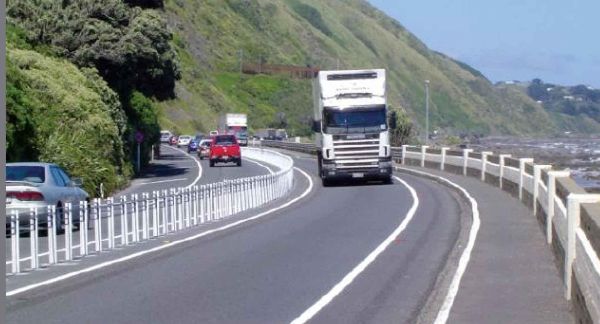Government ‘Asleep At The Wheel’ Over Road Safety
The New Zealand government has utterly failed to take effective action to lower the road toll, says the car review website, dogandlemon.com.

Editor Clive Matthew-Wilson was commenting after seven people were killed in Sunday’s tragic collision between a truck and a minivan.
“Many New Zealand roads are like a staircase without a handrail: you make a mistake, you’re going to get hurt.”
“Worse, this is the second fatal head-on collision on the same road in recent years.”
“The simple fact is: median barriers would have prevented both collisions, yet our incredibly slack government can’t seem to even build a fence down the middle of the road.”
"Studies show that we could actually reduce the road toll by 90% by doing nothing more than putting in roundabouts, median barriers and roadside fencing."
Swedish traffic safety expert Lars Ekman has said that median barriers were a key factor in Sweden’s low road toll.
In Sweden, median barriers are installed on 76% of roads with a speed limit above 80kmh.
Matthew-Wilson adds that, while median barriers are expensive, they are actually cheap compared to the cost of building grand highways.
Ekman estimates that: “For 10% of the cost of a motorway you could make safe a stretch of road ten times as long."
Matthew-Wilson says the current government often seems to be more interested in punishing motorists than in saving lives.
“Despite promising to roll out 198km of median barriers by mid-2021, between December 2018 and December 2020, the government installed just 37km of median barriers on state highways. As of July 2021, a further 12km of median barriers were installed on existing state highways.” (although this figure does not include median barriers fitted on new state highways under construction, nor median barriers installed on local roads.)
“Rather than hang their heads in shame and fast-tracking the installation of median barriers throughout our highway network, the government is instead now proposing to simply lower the speed limit on most of our roads. There is no evidence whatsoever that a lowered speed limit would have prevented Sunday’s tragedy. But a median barrier would have.”
Matthew-Wilson gave the example of the Kāpiti expressway, between Mackays and Peka Peka, north of Wellington. There have been no fatal accidents on this road, compared with seven in the previous two years before the median barrier was installed.
“The drivers who use the Kāpiti expressway aren't behaving any better than they were before the expressway was opened. It's just that the road has been altered in a way that stops mistakes turning into tragedy.”
Matthew-Wilson also slammed the government’s “reckless disregard” for the lifesaving benefits of Daytime Running Lights.
“The government has known for 20 years that Daytime Running lights can lower the daytime road toll by 25%. Yet the government has repeatedly ignored this cheap and simple lifesaving technology.”
“In 2010, the Log Transport Safety Council recommended DRLs as a way of preventing head-on collisions between trucks and ordinary vehicles. Again, the government simply ignored this advice.”
Matthew-Wilson adds:
“The government spent $51 million just on planning a cycleway over the Auckland harbour bridge. That amount of money would have paid for a cycle shuttle service over the bridge for the next ten years, with enough money left over to subsidise Daytime Running Lights for the majority of vehicles in this country.”


 Gordon Campbell: On Why Leakers Are Essential To The Public Good
Gordon Campbell: On Why Leakers Are Essential To The Public Good The Tree Council: Auckland Council Notifies Plan Change 113 Notable Trees
The Tree Council: Auckland Council Notifies Plan Change 113 Notable Trees ACT New Zealand: ACT New Zealand Celebration Brunch - David Seymour's First Speech as Deputy PM
ACT New Zealand: ACT New Zealand Celebration Brunch - David Seymour's First Speech as Deputy PM NZ Police: Operation Purple | Anti-Social Road User Gathering In Levin
NZ Police: Operation Purple | Anti-Social Road User Gathering In Levin New Zealand Defence Force: The Latest Update On The HMNZS Manawanui Response
New Zealand Defence Force: The Latest Update On The HMNZS Manawanui Response NZCTU: NZCTU Release Detailed Budget 2025 Analysis
NZCTU: NZCTU Release Detailed Budget 2025 Analysis Department of Conservation: DOC Reveals Surprising Toilet Paper Stats
Department of Conservation: DOC Reveals Surprising Toilet Paper Stats


